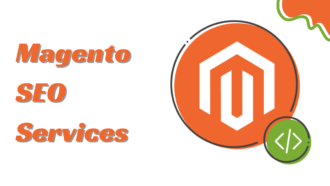8 Ways to Improve Your Magento Store’s SEO
- 1 8 Ways to Improve Your Magento Store’s SEO
- 1.1 1. Optimize Your Site Structure
- 1.2 2. Optimize Product Pages
- 1.3 3. Implement Responsive Design
- 1.4 4. Optimize Page Load Speed
- 1.5 5. Use SEO-Friendly URLs
- 1.6 6. Optimize Meta Tags
- 1.7 7. Create Quality Content
- 1.8 8. Utilize Google Search Console and Analytics
- 2 Conclusion:
Are you looking for a way to optimize your Magento store and increase its visibility? Look no further! This blog post will discuss six proven strategies for optimizing your Magento store. From leveraging managed Magento hosting to improving page speed and developing an effective content strategy, we will cover everything you need to know to get the most out of your eCommerce website. So, without further ado, let’s get started!
8 Ways to Improve Your Magento Store’s SEO
1. Optimize Your Site Structure
A well-organized site structure helps search engines understand your content better and improves user experience. Here’s how to optimize your Magento store’s site structure:
- Use a Flat Site Architecture: A flat site structure reduces the number of clicks it takes to reach any product page. Ideally, users should be able to access any page within three clicks from the homepage.
- Create a Logical Category Hierarchy: Organize your products into clear, logical categories and subcategories. For example, if you sell electronics, your hierarchy might be Home > Electronics > Mobile Phones > Smartphones.
- Use Breadcrumbs: Breadcrumb navigation helps users and search engines understand the hierarchy and path of the pages within your site. Magento supports breadcrumb navigation out of the box.
2. Optimize Product Pages
Product pages are the most critical part of your Magento store; optimizing them can lead to significant SEO gains.
- Unique Product Descriptions: Avoid using manufacturer descriptions. Write unique, detailed, and informative descriptions for each product. This not only helps with SEO but also improves conversion rates.
- Use High-Quality Images: Optimize images using descriptive file names and ALT tags. This helps search engines understand the content of the images and improves your site’s accessibility.
- Include Customer Reviews: User-generated content like reviews adds fresh content to your product pages and helps with SEO. It also builds trust and can improve conversion rates.
3. Implement Responsive Design
A responsive design ensures that your Magento store looks and functions well on all devices, including desktops, tablets, and smartphones. Google uses mobile-first indexing, meaning it primarily uses the mobile version of your site for ranking and indexing. Make sure your Magento store is fully responsive to cater to mobile users and improve your SEO.
4. Optimize Page Load Speed
Page load speed is a critical ranking factor. A fast-loading website enhances user experience and can significantly improve your SEO.
- Use a Content Delivery Network (CDN): A CDN stores copies of your website on servers worldwide, reducing the distance data travels and speeding up load times.
- Enable Caching: Magento supports various caching mechanisms like Varnish, which can drastically reduce server load and improve page load times.
- Optimize Images and Code: Compress images without losing quality and minify CSS, JavaScript, and HTML. Tools like TinyPNG for images and Google’s PageSpeed Insights for code optimization can be helpful.
5. Use SEO-Friendly URLs
Clean, descriptive URLs help search engines and users understand what the page is about.
- Enable URL Rewrites: In Magento, ensure URL rewrites are enabled to remove query strings from your URLs.
- Include Keywords: Use relevant keywords in your URLs, but keep them concise. For example, use “example.com/men/shoes” instead of “example.com/category.php?id=12”.
- Avoid Duplicate Content: Ensure each page has a unique URL and use canonical tags to indicate the preferred version of a page to search engines.
6. Optimize Meta Tags
Meta tags, including the title tag and meta description, are crucial for SEO.
- Title Tags: Craft unique, descriptive title tags for each page, including primary keywords. Keep them under 60 characters to ensure they display correctly in search results.
- Meta Descriptions: Write compelling meta descriptions for each page, including relevant keywords. Although meta descriptions don’t directly affect rankings, they influence click-through rates. Keep them under 160 characters.
- Header Tags: Use header tags (H1, H2, H3) to structure your content. Each page should have one H1 tag that includes the main keyword.
7. Create Quality Content
Content is king when it comes to SEO. High-quality, relevant content can help you rank for more keywords and provide value to your customers.
- Blogging: Regularly publish blog posts related to your products and industry. This can drive traffic and improve your search engine rankings.
- Product Guides and Tutorials: Create comprehensive guides and tutorials that help customers make informed purchasing decisions. This type of content can attract backlinks and improve your SEO.
- User-Generated Content: Encourage customers to submit reviews, photos, and videos. This will not only add fresh content to your site but also help with SEO.
8. Utilize Google Search Console and Analytics
Google Search Console and Google Analytics are essential tools for monitoring and improving your Magento store’s SEO.
- Google Search Console: Use this tool to monitor your site’s performance, check for crawl errors, and submit sitemaps. It also provides insights into which keywords are driving traffic to your site.
- Google Analytics: Track visitor behaviour, traffic sources, and conversions. This data can help you identify which SEO strategies work and where to improve.
Conclusion:
Improving the SEO of your Magento store is an ongoing process that involves optimizing various elements of your website. By following these eight strategies—optimizing your site structure, product pages, responsive design, page load speed, URLs, meta tags, content, and SEO tools—you can enhance your online visibility, attract organic traffic, and drive more sales. Consistently monitoring and adjusting your strategies based on performance data will ensure long-term success in your SEO efforts.
By following our tips, as well as the proper use of social media, you can take advantage of all its benefits and improve your Magento store’s SEO. With the right strategies, you can increase your store’s visibility, drive traffic, and ultimately increase sales.


















